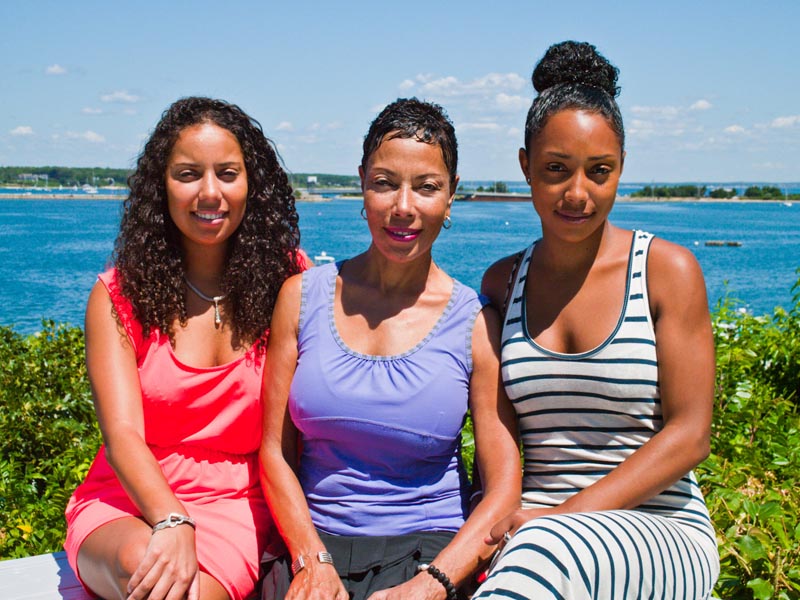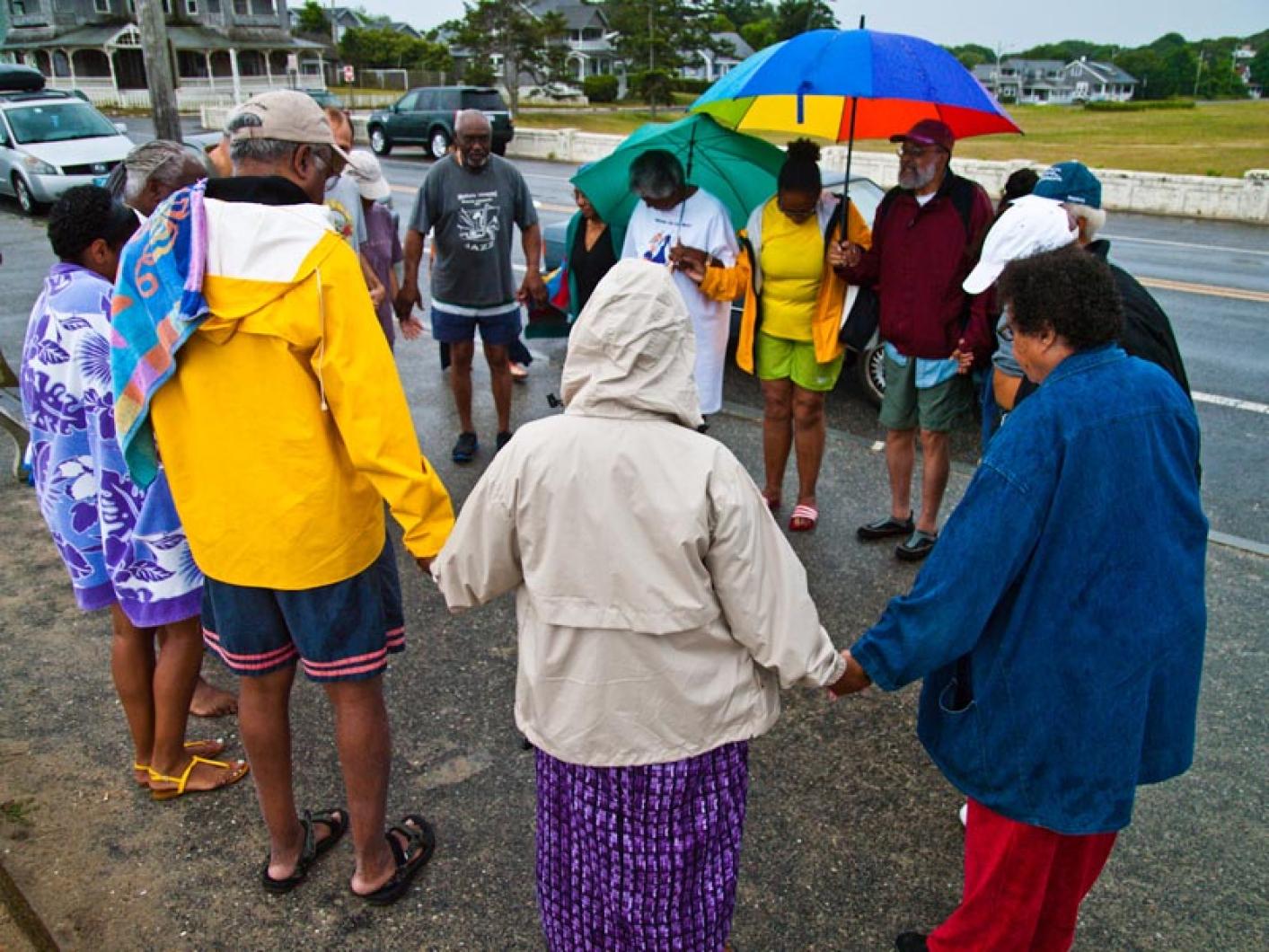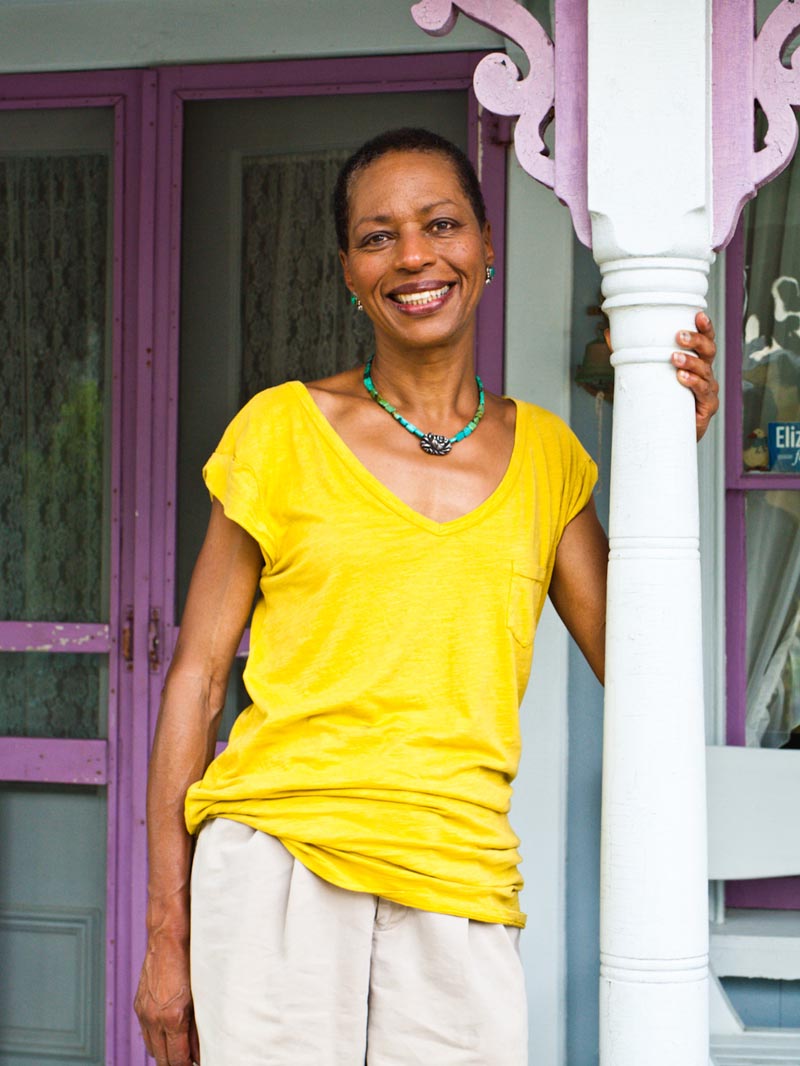On a recent sparkling morning at Inkwell Beach, summer resident and retired Boston judge Ed Redd emerged from his daily swim and carefully considered a question:
Does Martha’s Vineyard still retain a certain magic for African Americans — longtime residents and new visitors alike?
Judge Redd, a barrel-chested, affable ambassador for the Polar Bears, the historic group that finds invigoration and spirituality in morning swims at the Inkwell from July 4 to Labor Day, didn’t pause for long.
“There is no other resort like this in America,” he said, tucking a gray dreadlock behind his left ear. “No. No. No. None!”
A range of interviews and some data seem to bear him out. The next generation’s Rev. John Saunders, Ethel Waters, Adam Clayton Powell Jr., Dorothy West, Edward Brooke, and Barack Obama are likely to find the Vineyard just as alluring. According to the 2010 census, African Americans remain a small percentage of the Island’s full-time population — less than four per cent — but their numbers are growing steadily, with many choosing to retire here.
And that full-time cohort appears to be migrating throughout the Island. Oak Bluffs is still the Island’s black population center, but Edgartown and Vineyard Haven are creeping up with significant increases over the past decade.
Reliable data about the summer population is scarce, but a wide range of black residents say the Vineyard has retained its grip on the imaginations of vacationers, as more and more are finding their way here from places far beyond New England, New York and Washington D.C. The Island’s beauty, history, cultural and intellectual institutions — and not least — comfort factor all combine to create an atmosphere that keeps attracting short-term visitors, seasonal residents and year-rounders of all races, most especially blacks.
When compared with other summer resorts that have historically welcomed blacks — Idlewild in Michigan, Sag Harbor in New York, or Highland Beach in Maryland, for example — the Vineyard still stands apart, they say.
Generation to Generation

As Amy Robertson Goldson sits chatting on her deck, the Lagoon and Vineyard Haven harbor behind her, the word family appears in most every sentence that includes the words Vineyard or Island.
She is a prominent attorney in Washington, D.C., but year after year finds her way back to the Vineyard. This is where she was married, her daughters were christened and her late husband Alfred, her father and her grandmother are buried. Her mother Emily Robertson lives across town. And, she says, laughing, it’s here where any prospective sons in law will need to make the grade.
“If the guy they meet doesn’t like the Vineyard or doesn’t feel comfortable up here, he probably won’t make it,” she says.
Mrs. Goldson articulates a message that is repeated over and over among many long-time seasonal African Americans on the Island. Their love for the place keeps getting passed down, with each successive generation making its own memories.
“For us,” she says, speaking about her own family but she might just as well be talking about scores of others, “it’s about family and friends. I can be with friends who have been friends my whole life.”
Mrs. Goldson was among a generation of kids lucky enough to come to the Island for the entire summer. Usually the mothers stayed with them, while the fathers came when they could, often on the Friday night Daddy Boat, as it was known.
Occasionally, Mrs. Goldson’s father would fly down from the Boston area in his two-seater Ercoupe, buzzing State Beach as he headed to Trade Wind airfield, a grass landing strip that today serves as a dog park as well. What many families sought here was the kind of community they lacked the rest of the year, a critical mass of black friends, which had been sacrificed as families moved from black-only neighborhoods into predominantly white communities.
“You [had been] segregated, but not lost,” says Bettye Baker, who first came to the Vineyard in 1964 and writes about Oak Bluffs for the Gazette. “So you came to Martha’s Vineyard and recaptured that.”
Elizabeth (Betty) Rawlins, a retired college dean, and her husband Keith sought such an oasis for their two children, who stood out in the affluent and white Boston suburb of Hingham. Her daughter Pattie especially felt it. When she came to the Vineyard, Pattie rejoiced, proclaiming, “This was the way it ought to be,” according to her mother.
Pattie Rawlins, now grown with two children, ages 11 and 18, also represents her generation’s demographic shift: working women who don’t have as much time available to spend on the Vineyard. Still, she says she has passed her affection for the place down to her own children, despite their more limited exposure. “You just love going there, and being there,” she says.
Still the Only Ones
The Island has not only served as an important refuge for kids but for adults, too. Black professionals who have gained some measure of success still find solace here because they are the so-called Only Ones, rare representatives of their race, in their neighborhoods or workplaces, or both.
“It’s nice to see people like myself,” says Shayna Seymour, 36, a reporter and producer for the WCVB-TV show Chronicle in Boston. “It’s the norm. It’s nice. You come there, and you’re not the only one. That’s not the reality of our day-to-day living [off-Island].”
In her professional life as a Microsoft executive, Andrea Hardman Taylor travels far and wide and often finds herself the only black in the room. Here she can find a community that understands that dynamic, without having to explain it or getting puzzled looks when she does. “There is a coming together and sharing of common experiences,” she says. “It breaks down the isolation you feel” [the rest of the year].
Mrs. Baker agrees. “These are many of the things we talk about when we come to Martha’s Vineyard, it’s true,” she says. “And those are conversations we don’t have everywhere else.”
In Scarsdale, N.Y., where Shelley Christiansen grew up with no siblings, it took a major effort to get a group of black kids together. “Here,” says Ms. Christiansen, who has spent 50 summers on the Island and now lives here year-round, “you just walk out into the street.” In 2004, she was living overseas and wanted to come home. But where exactly was home?
“It occurred to me that Oak Bluffs has pretty much been a constant in my life,” says Ms. Christiansen, a real estate broker and writer who has lived on the Island since then.
History Part of the Lure
Robert C. Hayden was mulling over the 2010 census recently in the Oak Bluffs Library and was delighted to find that it confirms what he has been witnessing firsthand since he retired to the Island.
“I’ve seen, over the last 12 years, summer after summer, year after year, African American individuals and families I didn’t know were here [full-time],” says Mr. Hayden, a black historian.
Of the 15,966 full-time residents who identified themselves by one race in the census, 511 are African American, less than four per cent of the Island’s full-time population, but a 42 per cent increase over the 2000 census, compared with a 6.6 per cent increase in the white population. Of the 4,307 single-race residents of Oak Bluffs, 220 are African American, nearly a 38 per cent increase. In Tisbury, that number has risen 30 per cent to 144 and in Edgartown by 52 per cent to 102.
“And there are increasing numbers who are now buying houses, building homes, buying spec homes and being seasonal residents,” says Mr. Hayden, who authored the 1999 book, African Americans on Martha’s Vineyard and Nantucket. In a quarter-mile radius around his own Oak Bluffs house, five African American families have bought houses in the past year, he says.
Many new, short-term visitors are eager to visit the vacation spot of the country’s first black president. Increasingly, others come for the Island’s well-documented black history, which dates to colonial days. (Later, the first U.S. census in 1790 noted 39 blacks living on the Island, or one per cent of the population.)
The demand for tours on the African American Heritage Trail, with its 23 sites across the Island, can sometimes overwhelm the supply of available guides, says Elaine Cawley Weintraub, chairman of the high school history department and co-founder of the Heritage Trail with Carrie Camillo Tankard, who is also vice president of the Vineyard chapter of the NAACP. “For older African Americans, they are so excited and honored and pleased” to take in the trail, she said.
Here they may learn that a black man, the Rev. John Saunders, first brought Methodism to the Island in 1787, not those who later founded the famed Methodist Camp Ground; that the great blues, jazz and gospel singer Ethel Waters stayed in the Shearer guest cottage; that Adam Clayton Powell Jr. bought a house in the Highlands; Dorothy West, the novelist and youngest Harlem Renaissance figure, was virtually unknown to recent generations until Oprah Winfrey produced a TV movie of The Wedding; that Edward Brooke, the first black elected to the U.S. Senate since Reco nstruction, taught swimming at Inkwell beach; and that President Obama probably won’t vacation on the Island in 2012, an election year.
Mr. Hayden conducts his own walking tours around Oak Bluffs, and encounters more people coming from Florida, California, Texas, Illinois, and the state of Washington. “It’s very, very noticeable,” he says.
Not Post-Racial Either
Still, despite the attraction of the Vineyard to African Americans, the Island occasionally serves up reminders that a post-racial society does not exist here either.
A panel in late May aired the challenges that confront minority students in the Island’s schools, including facing low expectations, isolation, suspicion over their achievements and lack of a diverse teaching staff that can serve as mentors.
Some believe the Island is still recovering from its reaction to the young blacks, many of them upper middle class college students, who amassed on the Island in the late 1990s. The overcrowding — some estimates put the total summer population at 150,000 or more in those years — seemed to magnify cultural differences, highlight some latent racism and provoke more-than-usual impatience with drinking and rowdiness. Unfounded rumors about the presence of gangs swept the Island regularly, and the tensions left a lingering negative impression among black college students and young professionals that has only recently withered on the grapevine, according to a longtime seasonal resident who witnessed those summers with dismay.
“People are coming back and it’s just recently that they are coming back,” said the African American woman who did not want to be identified by name. “Once you put that out there, it takes a long time to build it back.”
In case he had forgotten, Judge Redd was reminded some years ago during a traffic stop. The police officer, he says, berated him in a tone that suggested a racial subtext. As he tells the story, he later mentioned the incident to a superior officer, who responded, “I know exactly who it is, and he won’t be back next summer. He doesn’t know the Vineyard way.”
“It’s close to paradise,” the judge said about the Island, “but it’s not paradise.”
New Full-Time Residents
Sitting on a bench in Ocean Park, Kristin Finley Brown puts on her dark glasses and looks out across the green sward of the park, past the bandstand, past the seawall and perhaps into her future and that of her own family on the Island.
Ms. Finley Brown, 32, spent every summer on the Island growing up, but she recently returned with her husband to live here full time. She is the general manager of Hooked, the new restaurant in the Harthaven section of Oak Bluffs, and her husband, a mortgage banker, works from home. Minutes away are her parents, who live on the Island most of the year.
“Even just driving to work is different,” says Ms. Finley Brown. “I’m looking at blue skies and water.
“Anything you may be doing is better doing it on Martha’s Vineyard, and that applies regardless of race, color, creed.”










Comments (48)
Comments
Comment policy »